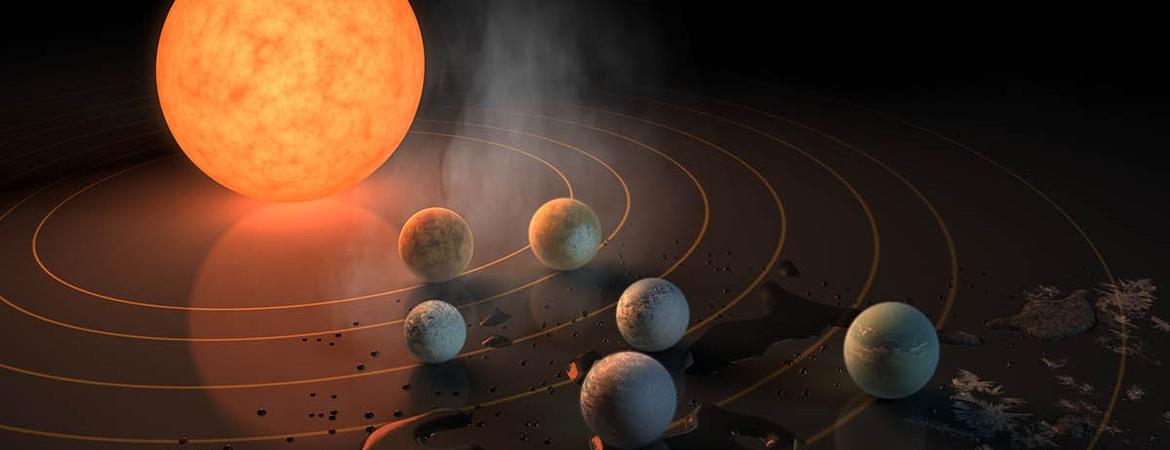-
New Study Dramatically Narrows the Search for Advanced Life in the Universe
June 18, 2019 / Written by: Jules Bernstein
Three planets orbiting TRAPPIST-1 fall within that star’s habitable zone. Credit: R. Hurt/ NASA/JPL-Caltech/Toxic gases limit the types of life we could find on habitable worlds.
RIVERSIDE, CA – Scientists may need to rethink their estimates for how many planets outside our solar system could host a rich diversity of life.
In a new study, a UC Riverside–led team discovered that a buildup of toxic gases in the atmospheres of most planets makes them unfit for complex life as we know it.
Traditionally, much of the search for extraterrestrial life has focused on what scientists call the “habitable zone,” defined as the range of distances from a star warm enough that liquid water could exist on a planet’s surface. That description works for basic, single-celled microbes — but not for complex creatures like animals, which include everything from simple sponges to humans.
Read the full press release from UC Riverside.
Source: [UC Riverside]
- The NASA Astrobiology Institute Concludes Its 20-year Tenure
- Global Geomorphologic Map of Titan
- Molecular Cousins Discovered on Titan
- Interdisciplinary Consortia for Astrobiology Research (ICAR)
- The NASA Astrobiology Science Forum Talks Now on YouTube
- The NASA Astrobiology Science Forum: The Origin, Evolution, Distribution and Future of Astrobiology
- Alternative Earths
- Drilling for Rock-Powered Life
- Imagining a Living Universe
- Workshops Without Walls: Astrovirology